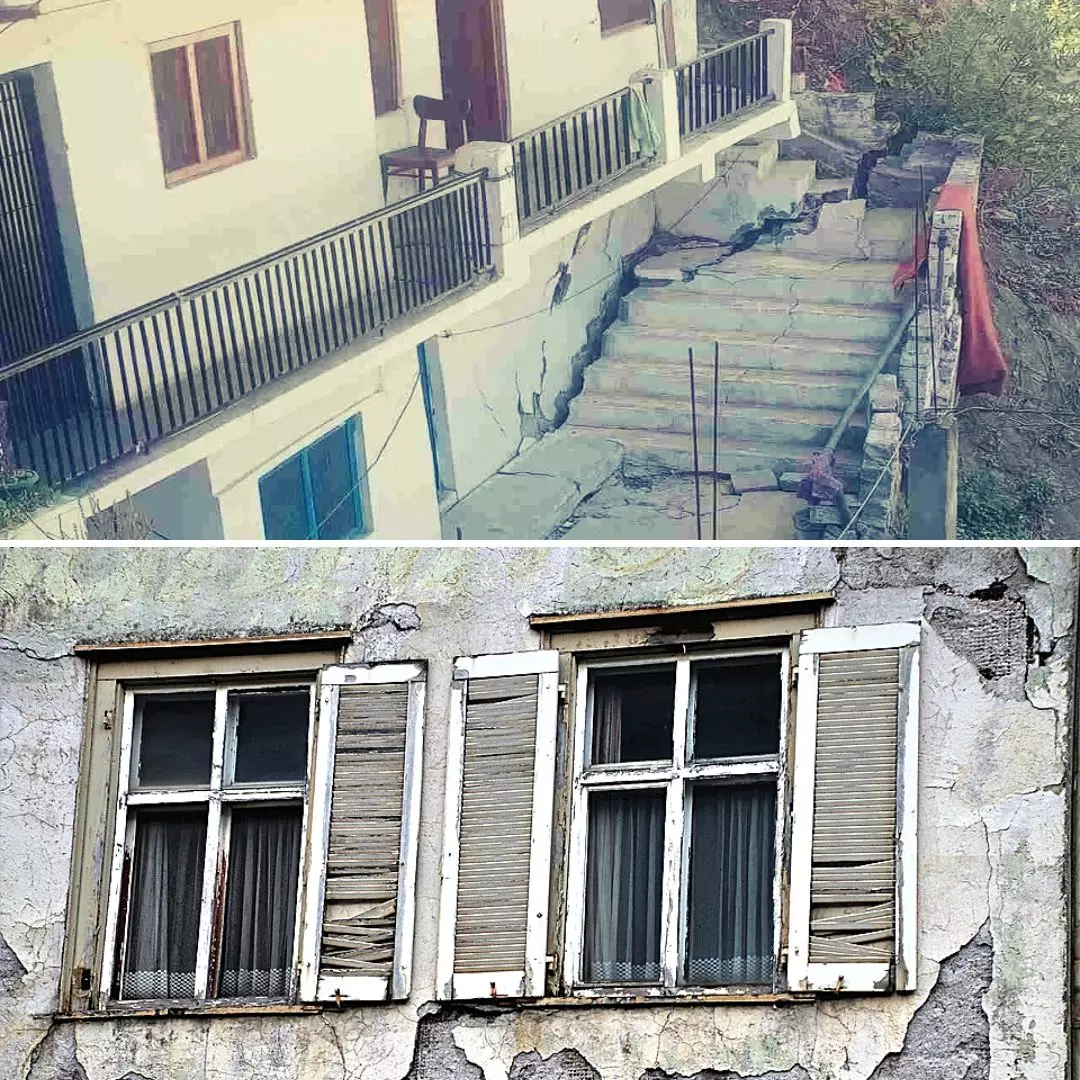
Image Credit- Twitter/ Social Development for Communities Foundation
Joshimath Sinking! Uttarakhand's Crucial Tourist & Religious Place Declared Disaster Impacted
Writer: Deepthi Rao
She is a postgraduate student pursuing Multimedia Journalism at Christ Deemed to be University. She believes in the power of storytelling and truth. "Do it with passion or not at all."
Uttarakhand, 9 Jan 2023 11:33 AM GMT
Editor : Shiva Chaudhary |
A post-graduate in Journalism and Mass Communication with relevant skills, specialising in content editing & writing. I believe in the precise dissemination of information based on facts to the public.
Creatives : Shiva Chaudhary
A post-graduate in Journalism and Mass Communication with relevant skills, specialising in content editing & writing. I believe in the precise dissemination of information based on facts to the public.
Out of the 4,500 buildings in the town, 610 now have cracks that render them uninhabitable. As plans for their stay in hotels, homestays, and other safe places have been prepared, people have been instructed to leave hazardous and untenable dwellings.
In response to the mounting threat from soil subsidence that has caused cracks in more than 600 homes in the holy city of Joshimath, the Uttarakhand government has classified the city's nine municipal wards as "disaster impacted" and "unsafe for living" under the Disaster Management Act.
Almost 600 affected families were ordered to be evacuated from the city and moved to safe locations. But before Joshimath became a sinking town, it was a place of importance from a cultural, religious, and tourism point of view.
Tourism & Footfall In Joshimath
Uttarakhand is located in the Himalayan mountain range's foothills. The state borders China (Tibet) in the north, Nepal in the east, Himachal Pradesh in the west and northwest, and Uttar Pradesh in the south. It has nearly all agro-geo climatic zones, allowing for economic prospects in floriculture and horticulture.
In 2022, the state witnessed a footfall of close to 5 crore tourists, and various efforts were undertaken by the state government to boost tourism in the state. A report by the Times of India says that Joshimath had 4.9 lakh visitors in 2019, about 4.3 lakhs in 2018, and 2.4 lakhs in 2017. The trend shows that tourism has increased each year. However, the latest developments of the Joshimath subsidence will likely disrupt the state's tourism.
Why Is It Considered A Holy Place?
The main idol of the Badrinath temple is transferred each winter to the Joshimath Vasudeva temple, where Lord Badrinath spends the colder months. Hindus see Joshimath as a sacred site and a major national pilgrimage destination.
Joshimath or Jyotirmath is one of Adi Shankara's four central institutions; the others are Dwarka, Puri, and Shringeri. The Shankaracharya Math is located here. The four institutes are spread across India's four geographical regions: the north, south, west, and east. The responsibility of managing these four centres was given to Shankara's four followers, Padma-Pada, Hasta-Malaka, Totakacharya, and Suresvaracharya.
For pilgrims travelling to the Char Dham, Joshimath functions as a station. The Chardham camps are located 1,875 feet above sea level. Many holy places are included in the pilgrimage to the shrines of the four sacred sites- Kedarnath, Badrinath, Gangotri, and Yamunotri. Among them is Joshimath.
Hill stations are popular places for tourism, and Joshimath has proven to have religious significance. Development without considering the impact is a threat to the safety of all. Joshimath has become a sinking sanctum, and efforts are now being undertaken to prevent losses.
 All section
All section













